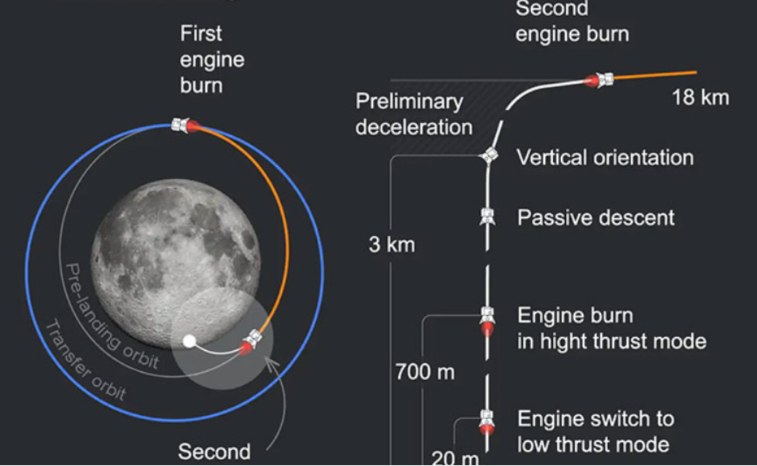The Luna 25 spacecraft, what happened?

The Luna 25 spacecraft, in the nature of a lunar lander, was launched from Earth to our natural satellite on August 11, 2023 by a Soyuz 2.1b rocket with a fiery earthquake from the Vostochny rocket base, in the Russian far east.
We bring diagrams of the flight trajectory and planned operations. ROSCOSMOS experiences gathered on the Phobos-Grunt and EXO MARS missions have certainly been implemented in the first Russian mission to the Moon after Luna 24, launched 47 years ago.
August 10
The first Russian mission to the Moon since 1976 was launched from the Vastochny Cosmodrome in the far east of Russia. The mission is called Luna 25 and is a continuation of the Luna 24 mission, which brought a sample of the Moon to Earth nearly 50 years ago.
Luna 25 took off on a Soyuz rocket at midnight on a five-day journey to our natural satellite. The probe was then scheduled to spend five to seven days in lunar orbit, after which an attempt to land on the Moon was made.
The landing destination is located in the area of the south pole of the Moon. The area is of great interest to all nations that have plans to one day send a manned crew to the Moon because of what is expected to be large deposits of water ice trapped in the area in deep craters where the warm rays of the Sun never reach.

NASA has a plan to establish at least one manned base in that area by the end of this decade.
Luna 25 was supposed perform more science experiments. Among other things, she is equipped with a spatula with which she needs to extract samples from a depth of 15 centimeters in order to check the presence of frozen water. Of course, water is important for many reasons.
According to earlier plans, the Luna 25 mission was supposed to be launched in October 2021, but there was a delay due to technical reasons. The European Space Agency, which initially collaborated with the Russian Space Agency on the Luna 25 mission project, withdrew from this collaboration after Russia invaded Ukraine in February 2022.
August 11
Luna 25, the robotic lander of Roscosmos, was successfully launched from the Vostochny rocket base towards the Moon. The landing in the Boguslavsky crater in the area of the southern lunar pole was planned for August 23, 2023.
The operational life of the mission is planned for one year. All launch parameters were in order. The aircraft is in optimal technical condition. The mass of the aircraft is 1750 kg, the height is 3.17 m, it carries 30 kg of scientific instruments that make up a group of nine specialized, thematic, devices.

It is almost unknown how, together with Luna 25, eight small spacecrafts are moving towards the Moon, two of which are composed of six “cube” units each. No information is available on the type and purpose of these aircraft.
Considering the data, it is very likely that these are two radio-relay spacecraft and submissions aimed at testing their scientific and technical capabilities in lunar orbit, or perhaps even upon impact with its surface.
August 20
Sad news on the space front. The mission was lost, Luna 25 hit the surface of the Moon for an unknown reason and broke up. The command for the transition from the lunar orbit, in which the spacecraft successfully arrived and began operations, was sent on Saturday afternoon.
Communication with the spacecraft ended forty-seven minutes later. Attempts to establish communication on Saturday evening and during Sunday did not bear fruit.
After processing the telemetry data, it became clear that the miracle (that somehow Luna survived the impact) did not happen and a very important mission was forever silenced.
Want to read more about the universe? Visit our blog!

